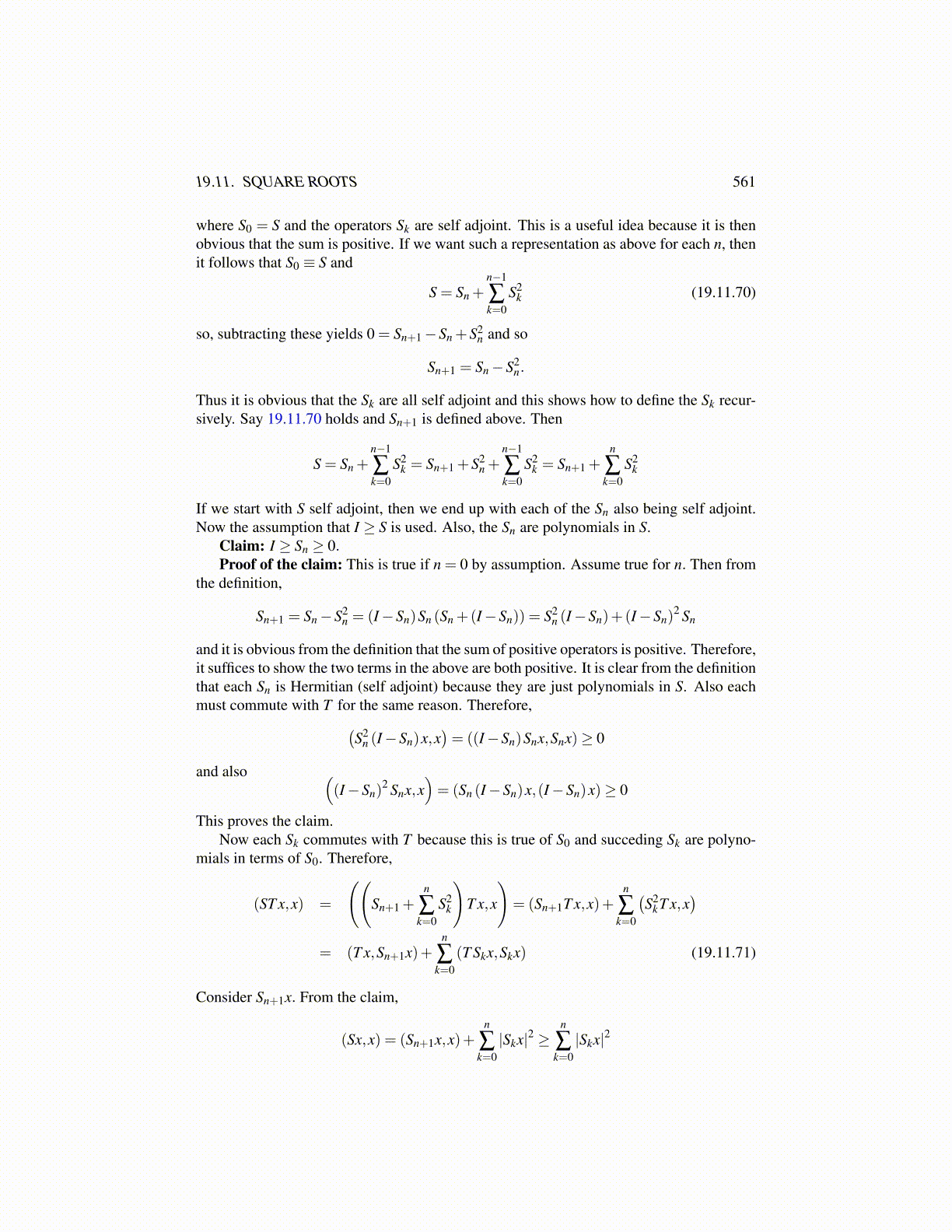
19.11. SQUARE ROOTS 561
where S0 = S and the operators Sk are self adjoint. This is a useful idea because it is thenobvious that the sum is positive. If we want such a representation as above for each n, thenit follows that S0 ≡ S and
S = Sn +n−1
∑k=0
S2k (19.11.70)
so, subtracting these yields 0 = Sn+1−Sn +S2n and so
Sn+1 = Sn−S2n.
Thus it is obvious that the Sk are all self adjoint and this shows how to define the Sk recur-sively. Say 19.11.70 holds and Sn+1 is defined above. Then
S = Sn +n−1
∑k=0
S2k = Sn+1 +S2
n +n−1
∑k=0
S2k = Sn+1 +
n
∑k=0
S2k
If we start with S self adjoint, then we end up with each of the Sn also being self adjoint.Now the assumption that I ≥ S is used. Also, the Sn are polynomials in S.
Claim: I ≥ Sn ≥ 0.Proof of the claim: This is true if n = 0 by assumption. Assume true for n. Then from
the definition,
Sn+1 = Sn−S2n = (I−Sn)Sn (Sn +(I−Sn)) = S2
n (I−Sn)+(I−Sn)2 Sn
and it is obvious from the definition that the sum of positive operators is positive. Therefore,it suffices to show the two terms in the above are both positive. It is clear from the definitionthat each Sn is Hermitian (self adjoint) because they are just polynomials in S. Also eachmust commute with T for the same reason. Therefore,(
S2n (I−Sn)x,x
)= ((I−Sn)Snx,Snx)≥ 0
and also ((I−Sn)
2 Snx,x)= (Sn (I−Sn)x,(I−Sn)x)≥ 0
This proves the claim.Now each Sk commutes with T because this is true of S0 and succeding Sk are polyno-
mials in terms of S0. Therefore,
(ST x,x) =
((Sn+1 +
n
∑k=0
S2k
)T x,x
)= (Sn+1T x,x)+
n
∑k=0
(S2
kT x,x)
= (T x,Sn+1x)+n
∑k=0
(T Skx,Skx) (19.11.71)
Consider Sn+1x. From the claim,
(Sx,x) = (Sn+1x,x)+n
∑k=0|Skx|2 ≥
n
∑k=0|Skx|2